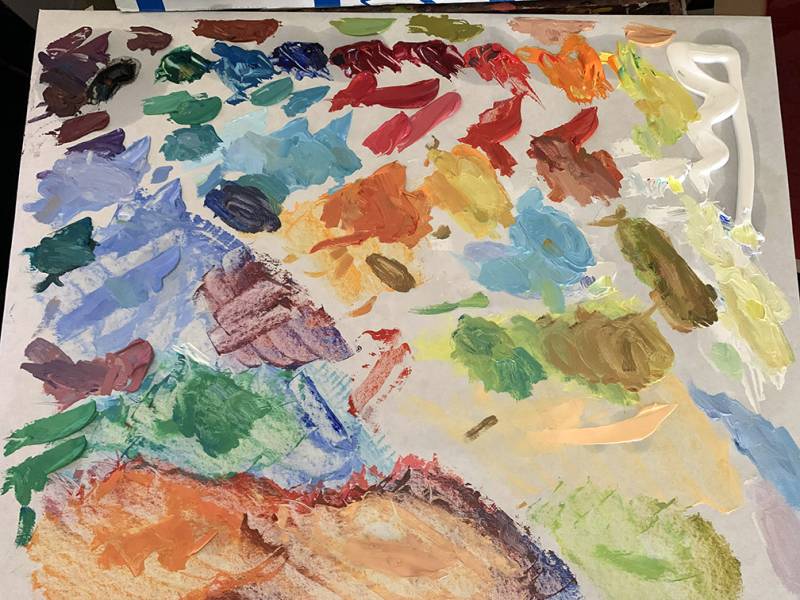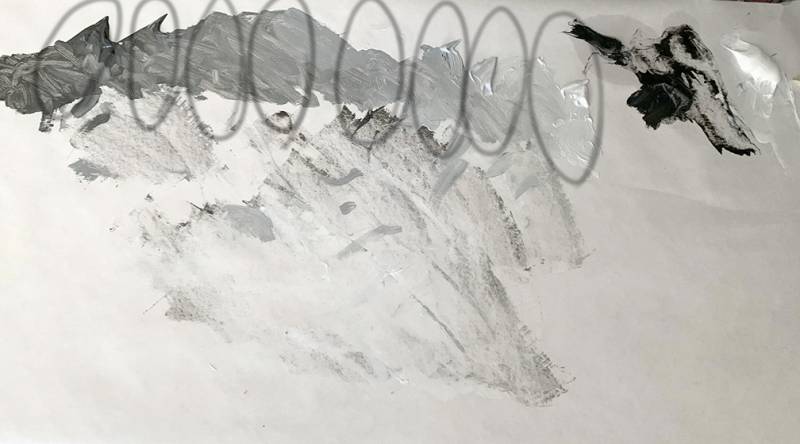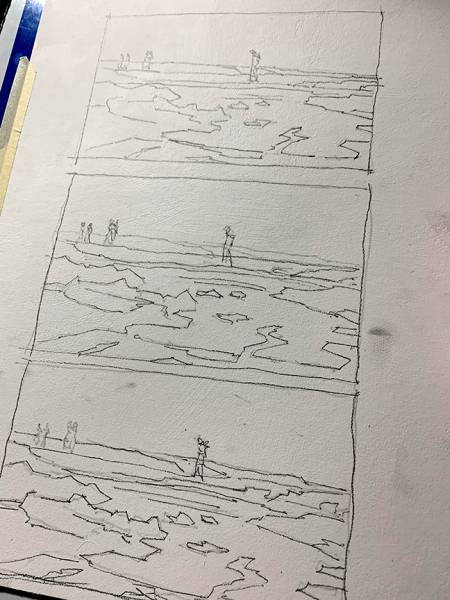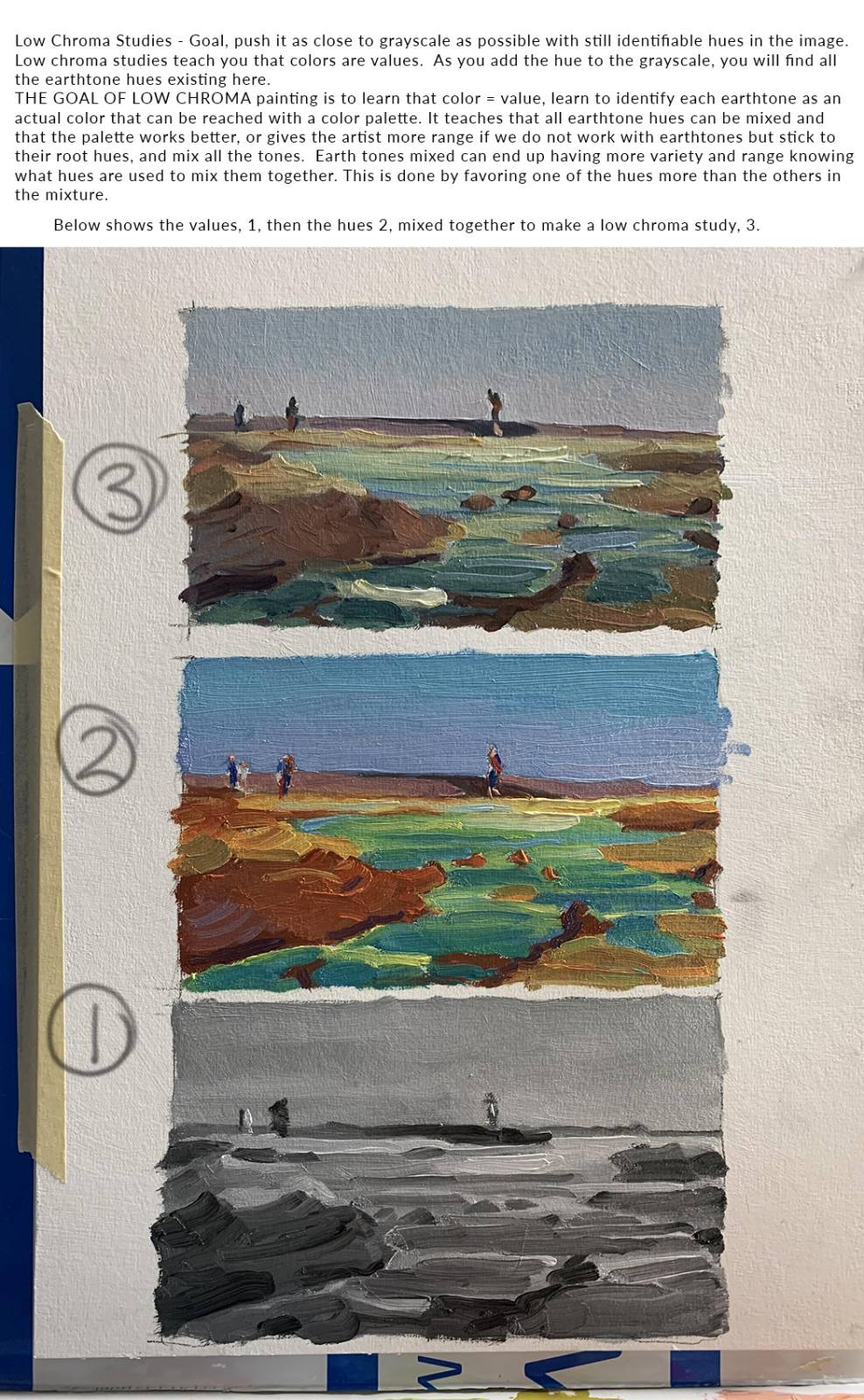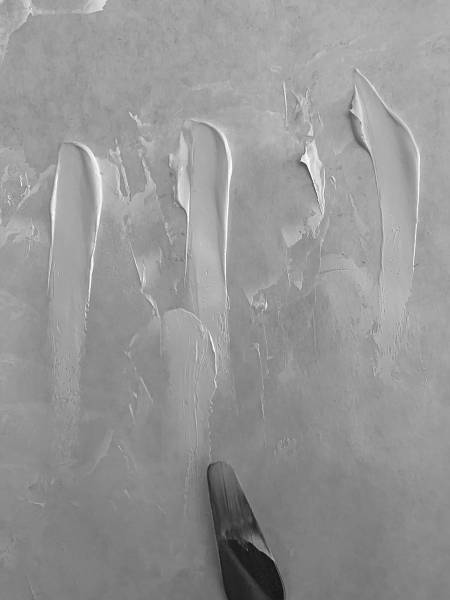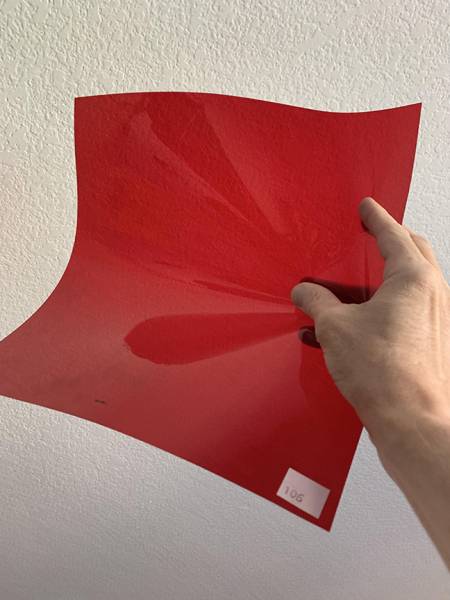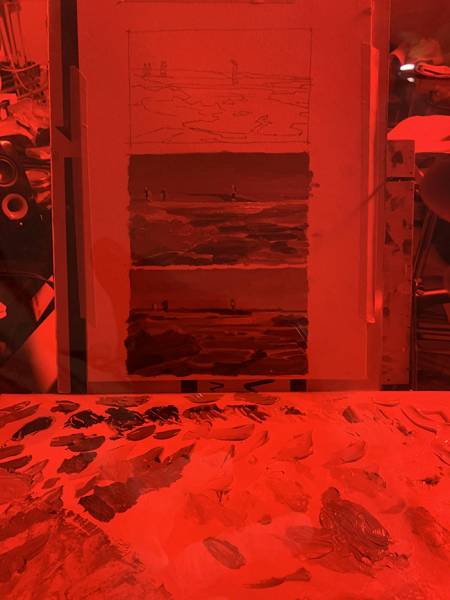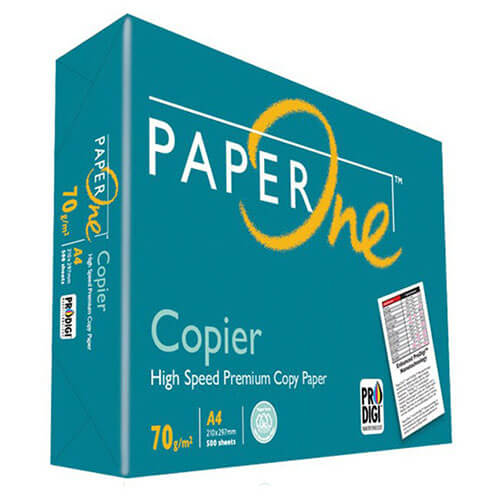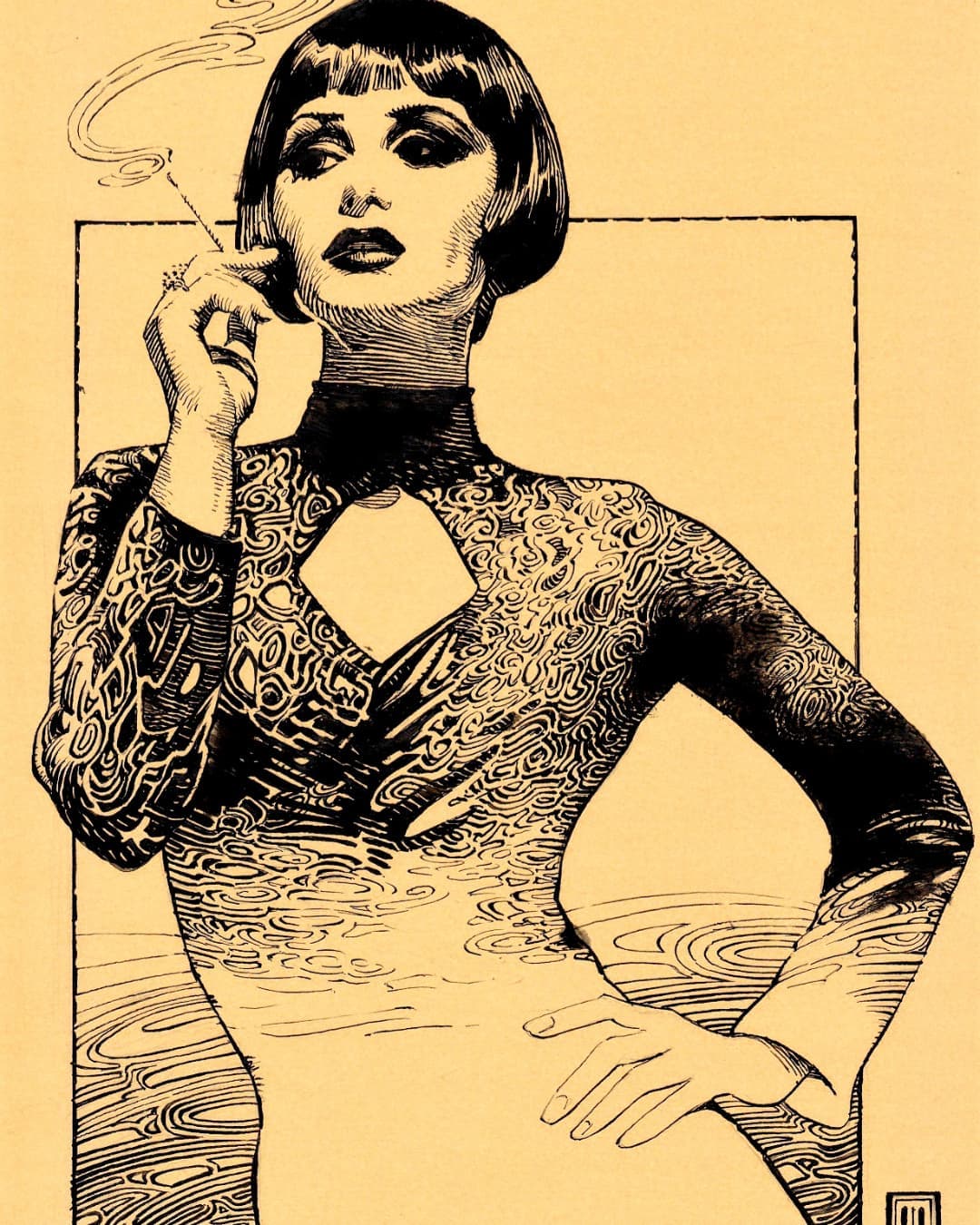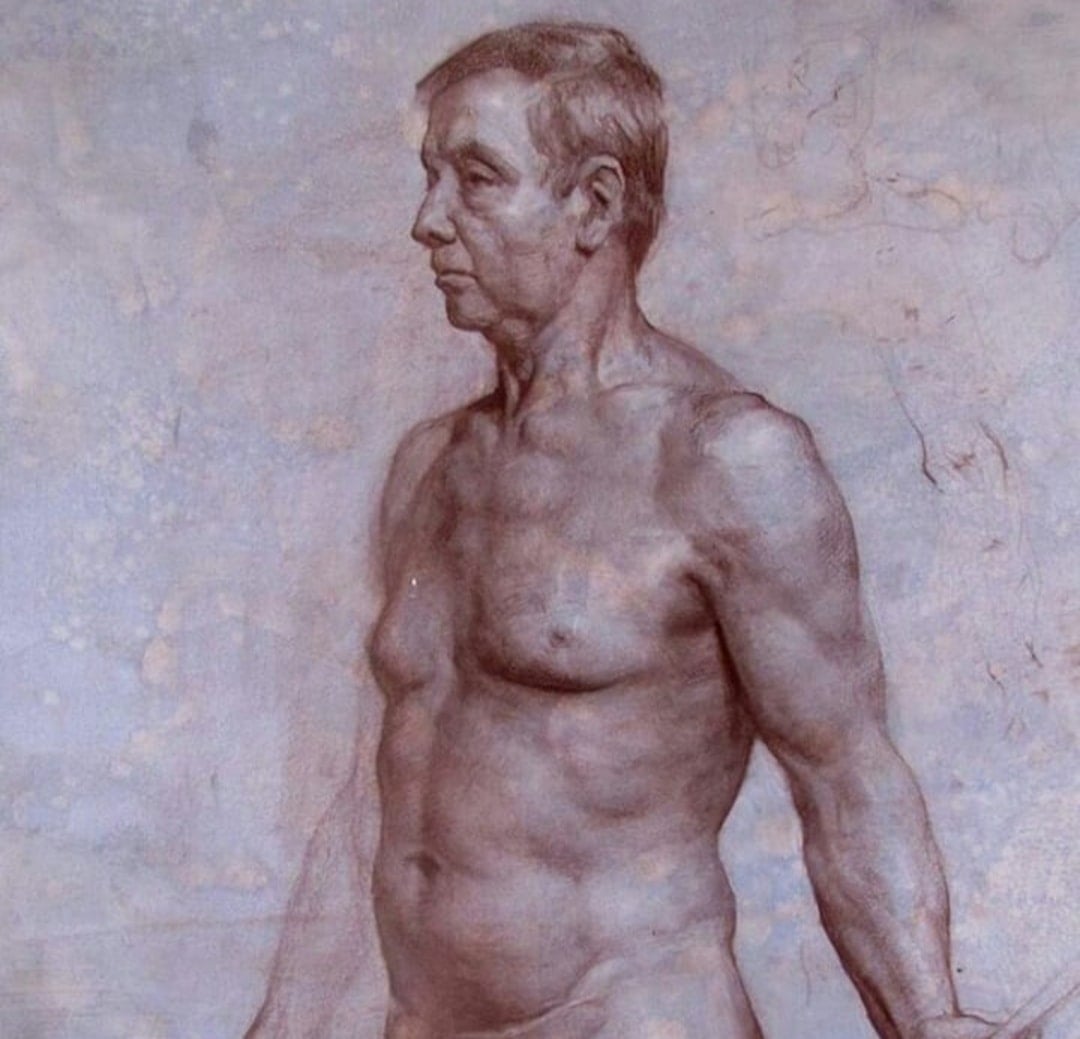RON LEMEN
SATURDAY, OCTOBER 30TH, 2021
Nhắc nhở điều này với TL: DR nhưng tất cả các thông tin đáng chú ý. Một kết xuất thông tin sẽ mất một phút để phân tích cú pháp.
Tại sao chúng ta có một lý thuyết về màu sắc? Chúng ta không thể chọn bất kỳ màu nào chúng ta muốn? Về mặt lý thuyết, không có lý do gì bạn không thể chọn bất kỳ màu cũ nào và làm bất cứ điều gì với nó. Nhưng để kiểm soát màu sắc để tạo ra ảo ảnh sao cho chúng thực tế giống với một thứ gì đó là một thực hành đòi hỏi đào tạo để hiểu việc kiểm soát màu sắc / giá trị / sắc độ, khi nào điều chỉnh màu sắc, cách trộn và pha trộn, thực hành để hiểu các kỹ năng và ghi nhớ các hành động và sau đó tìm hiểu lý do tại sao bạn sử dụng các điều kiện nhất định so với các điều kiện khác, tại sao màu này hơn màu kia, v.v. đây là một số lý do chúng ta có lý thuyết về màu sắc đối với chúng ta với tư cách là một nghệ sĩ và cách làm việc với chúng để tạo ra sản phẩm của chúng tôi (hình ảnh).
Tôi muốn giải thích thêm một chút về những gì đang diễn ra ở đây với các nghiên cứu về sắc độ và tại sao đây là một nơi quan trọng để bắt đầu đào tạo về màu sắc của bạn.
Đây là nơi lý tưởng để bạn bắt đầu quá trình đào tạo của mình, cách ánh sáng hoạt động. Khóa sắc tố và nghiên cứu màu sắc là thực hành quan sát các điều kiện ánh sáng thực tế, xác định cách thức và lý do tại sao chúng ta nhìn thấy những thứ này và chuyển dịch thông qua việc sử dụng sắc tố / pixel. Bằng cách xác định những điều kiện này và học cách kiểm soát chúng một cách thành công, chúng ta sau đó có thể điều khiển lĩnh vực hình ảnh cho phù hợp với nhu cầu của mình.
Đây là bảng màu đầy đủ, được tách ra từ bảng giá trị của tôi. Tôi sử dụng những bức tranh cũ không có ý nghĩa gì đối với tôi làm bảng màu và bọc chúng trong giấy đông lạnh. Giấy đông lạnh là giấy bảng màu nhưng rẻ hơn giấy bảng màu. Đây là một liên kết để lấy mẫu hàng hóa.
Đây là bảng giá trị. Mỗi giá trị được tạo ra dựa trên số lượng màu chính mà tôi đã trộn cho bức tranh. Một số màu sắc chia sẻ giá trị vì vậy cuối cùng tôi không cần phải tạo ra nhiều giá trị như tôi đã có màu sắc.
Đào tạo từ cuộc sống, không phải từ ảnh là lý tưởng nhất. Máy ảnh không thể ghi lại những gì mắt chúng ta có thể nhìn thấy, tốt nhất nó chỉ chụp được 70% những gì mắt chúng ta nhìn thấy. Sự rèn luyện từ cuộc sống sẽ cho phép bạn nhìn ra ngoài những giới hạn của bức ảnh bằng cách hiểu được các mối quan hệ phức tạp của không gian và các mối quan hệ không gian. Chủ nghĩa hiện thực là một hệ thống các công cụ bạn kiếm được bằng cách xây dựng thành công với những gì bạn có cho đến khi đảm bảo nhu cầu lớn hơn. Chương trình đào tạo này bao gồm kiểm soát cạnh, kiểm soát chuyển tiếp tông màu và sắc độ, hiểu chiều sâu và hình thức, sắc thái bề mặt (kết cấu) và gợi ý thay vì kết xuất quá mức vì mục đích tạo ra ảo ảnh chân thực, hành động và diễn xuất, dàn dựng, kiểm soát sự suy giảm của ánh sáng, sự thay đổi trong máy bay, v.v.
Tôi đã bắt đầu cuộc trò chuyện này hai phần trước với khía cạnh quan trọng nhất của việc đào tạo nghệ sĩ, màu sắc = giá trị. Nếu bạn không thể nhìn thấy một màu sắc như một giá trị, bạn sẽ gặp khó khăn trong việc kiểm soát nó. Tất cả các màu đều là giá trị bất kể sức mạnh của chúng đối với mắt bạn. Thuộc tính chế ngự được gọi là sắc độ, hay độ sặc sỡ, và bất kể thuộc tính hay cường độ sắc độ mạnh mẽ này là gì, nó đều có một giá trị cơ bản đối với nó.
Phạm vi sắc độ hàng ngày của chúng tôi trung bình nằm ở đâu đó ở phím giữa của sắc độ với các phần mở rộng theo cả hướng cao và thấp. Khi bạn học cách kiểm soát phạm vi sắc độ, câu trước sẽ hoàn toàn có ý nghĩa. Để hiểu câu này, màu sắc cần được chia thành các sắc độ chuyển màu có thể phân chia được mà mắt thường có thể quan sát được.
Để sử dụng màu sắc “thông thường” tốt hơn trong hội họa cuộc sống, chúng tôi kiểm tra các giới hạn của màu sắc và giá trị để tìm hiểu sự hài hòa màu sắc tốt hơn để vẽ tranh đẹp hơn. Màu sơn thấp giúp người ta xác định rằng màu sắc là giá trị. Các bài tập về sắc độ cao giúp người nghệ sĩ biết rằng tất cả các vật thể đều có màu cơ bản vốn có bất kể chúng có thể xuất hiện với màu xám / nâu như thế nào đối với mắt chúng ta. Là một nghệ sĩ bán hình ảnh, nếu chúng ta tạo ra những bức tranh thiếu kiểm soát màu sắc từ góc này sang góc khác của mỗi bức tranh, chúng ta sẽ bị mắc kẹt trong rất nhiều bức tranh.
Tôi bắt đầu với sắc độ thấp mà tôi nghĩ là hữu ích và thiết thực hơn đối với đa số họa sĩ và ít được thảo luận nhất, trong khi người cố vấn của tôi bắt đầu chúng tôi với sắc độ cao và nó đã phá vỡ tất cả những người học với anh ấy bao gồm cả tôi. Tôi nghĩ anh ấy đã làm điều này có mục đích giống như tất cả những người cố vấn điện ảnh đó, để mỉa mai kéo tấm thảm ra khỏi cái tôi của chúng ta. Chúng ta có thể vẽ, nhưng chúng ta có thể thực sự nhìn thấy không? Chúng tôi nhanh chóng nhận ra rằng nhìn thấy cũng cần phải học.
Các màu trên được quyết định dựa trên bảng lý thuyết màu mà tôi đã mô tả trong các bài viết trước và sẽ có một ảnh chụp nó dưới đây để nhắc nhở rằng đây là một bảng màu cụ thể được thiết kế để đạt được hầu hết mọi màu có thể với sắc độ sạch nhất có thể. Làm sạch màu bất kể màu xám như thế nào là điều bắt buộc để tranh bán chạy. Chúng tôi đang thực hành để tìm ra sắc độ tối ưu cho tất cả các lựa chọn màu sắc của chúng tôi.
Tạo dấu vết carbon về chủ đề của bạn để bạn có thể nhân bản hình ảnh nhiều lần nếu cần cho các bài tập.
Our daily chromatic range on average is somewhere in the middle key of chroma with extensions in both the high and low direction. When you learn how to control the chromatic range the previous sentence will make complete sense. To understand this sentence, color needs to be broken down into divisible gradients of chroma that are clearly observable to any eye.
To exercise better “regular” colors in life painting, we test the limits of color and value to learn better color harmony for better painting. Low chroma painting helps one identify that color is value. High chroma exercises help the artist learn that all objects have an inherent base color regardless of how gray/brown they might appear to our eye. As an artist selling images, if we generate paintings that are lacking color control from corner to corner of each canvas, we will be stuck holding onto a lot of canvases.
I began with low chroma which I think is more useful and practical to a majority of painters and the least discussed, while my mentor started us with high chroma and it broke everyone that studied with him including me. I think he did this on purpose like all of those movie mentors do, to sarcastically pull the rug out from under our egos. We might be able to paint, but can we actually see? We quickly learned that seeing takes learning too.
The above hues are decided upon from the color theory palette I have described in past articles, and will have a shot of it below here to remind that this is a specific palette designed to achieve almost every hue possible with the cleanest chroma possible. Clean color regardless of how gray it is is a must for paintings to sell well. We are practicing to find the optimal chroma for all of our color choices.
Make a carbon tracing of your subject matter so you can duplicate the image as many times as needed for the exercises.
In exercising low chroma painting, the idea is to first mix the values of the colors, then mix the hues to match the values, then mix the two together depending upon how chromatic vs how tonal you want the picture to be. The more gray you add to the hue, the more the hue will shift towards value, the less gray, the more the hue dominates the mixture making it more chromatic.
Low chroma painting is controlling the colors for the sake of value. If these are paintings we are making for a series, they would likely be moody pieces, darker, more melancholic, expressing neutral to negative psychological emotions, etc. Less color in a scene tends to give it a somber feeling and gives the canvas an older appearance. Most of our art history is made up of tonalism, colorism being a more modern attribute to the history of painting.
Technically speaking, low chroma studies are paintings of value = color while high chroma practice is color = value.
For the low chroma studies, before practicing anything relevant, practice matching values to colors that you have mixed, and mix to match objects using this method and compare to see if it has been matched.
Mix all parts to match value before mixing them into each other. This assures that no hue becomes dominant because of value dominance.
HOW DO WE KNOW IF THE VALUE MATCHES THE COLOR? There are two practical ways to do this, with one being a little less accurate than the other.
The first way to do this is to shoot the paint swatches with even light and a quality camera angle that favors the lit parts of the paint vs. the parts in shadow. TO shoot the palette, do not aim a light directly at the palette. Bounce the light off of the ceiling if you have a white ceiling. This makes the entire ceiling a light source with no central hot spot that will create a gradation across the palette surface.
This photo was taken from the internet showing how bouncing light off the ceiling unifies the light in the space.
Take the image into a photo doctoring program, Photoshop, etc. and convert the file to grayscale. You can then compare the value and color. If they are identical, you are correct. If not, what you mixed will either appear lighter or darker than the value pile of paint.
The other more optimal method is using a red piece of cellophane as glasses to observe your mixture. Red cellophane will remove all hues from the visible spectrum and leave you with all values, albeit they will be in the red family.
This is a photo filter you can purchase in a pack of filters for studio spotlights. Here is a link to such a pack.
This was shot with the filter in front of my camera, and immediately showed me where adjustments were needed to match the two more accurately.
I made this one on purpose to show the effects of hue being so dominant that we want to match it rather than control it.
Once you have compared the image to the painting, if there are any glaring mistakes, remix and adjust.
Practice with these training aids until you can confidently identify the colors of your subject and mix them objectively observing only with your eyes. The latter methods of comparing are the training methods and should be reduced by need as you progress in your studies. Why? So you can eventually step it up and make art and not just more studies.
Learning to mix parts separately before mixing them all together feels counter intuitive to us at first because we all learned bad methods of palette painting by all of our instructors. Quite honestly, there are only a few painters out there that practice quality control before beginning the mixing process. And again, this is about learning, not about doing in practice. You do what you do to make your art, however, there is an objective way to learn, there is a big difference in method, mood, and mentality of the painter between them.
Here are a few challenges for you to try. Find other images and do the same with them.
Love learning to constantly improve, doing is only a part of it.

